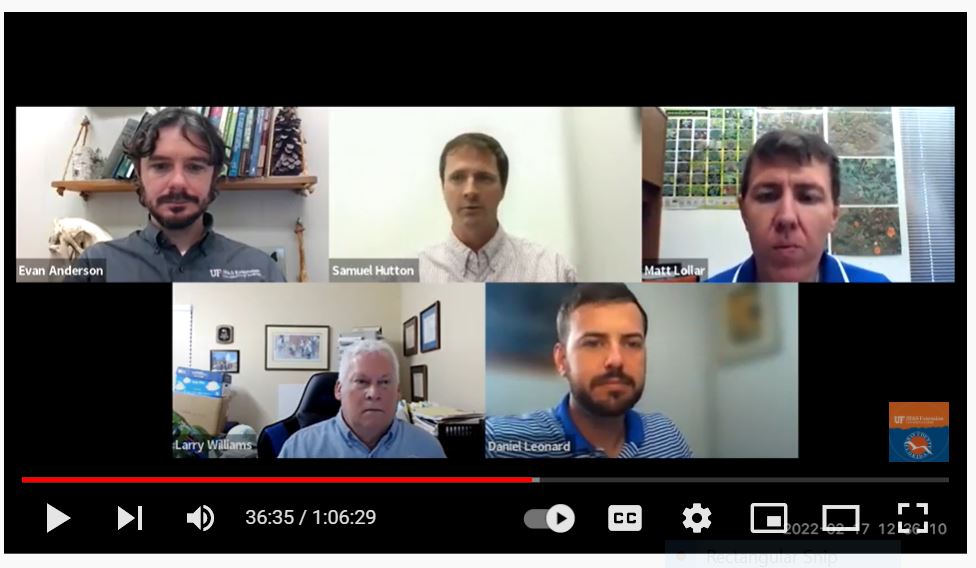
by Beth Bolles | Mar 31, 2022
The February Q&A on Growing Tomatoes offered valuable tips for the home gardener to be successful with tomatoes in 2022. Below are the reference materials related to specific questions that were asked.
Let’s start out with the panels favorite tomatoes including hybrids and heirlooms.
Evan: Supersweet 100, Sungold
Larry: Amelia, Brandywine, Cherokee Purple
Sam: Better Boy, Tasti Lee, Sweethearts
Matt: Mountain Magic, Mountain Rouge, Bella Rosa
Daniel: Black cherry and Big Beef
Why are tomatoes red?
Can we grow tomatoes year around?
I have very sandy/loamy soil. Do I have a chance at successfully growing tomatoes?
What is the best time to start tomatoes in North Florida?
If one grows in raised beds, should one rotate where in the bed tomatoes are planted?
If you plant tomatoes in mid-March, how long will they continue to produce fruit?
I’m thinking of trying hydroponic gardening on a few tomato plants this year. Do you think a 50/50 mix of perlite and vermiculite would be a good approach for a soil medium? I’d like to use 5-gallon buckets and keep maintenance to a minimum.
What tomatoes grow best in inland Bay County? Coastal vs inland considerations.
Best type for all day sun (speak to tomatoes light requirements)
What is the best tomato variety for Northwest Florida? I need one go-to variety for both regular tomatoes and cherry type.
How to get more tomatoes, less vine?
My tomatoes get black on the bottom and rot. What causes this and how do I prevent it?
Do tomatoes need a lot of water?
Why do my tomatoes split/burst/crack while on the vine?
Any suggestions for how to handle especially wet years like last summer? My tomatoes really suffered.
How do I keep the leaves from getting dark spots that spread and kills foliage?
How do you string tomatoes vine to a stake?
What causes catfacing?
Every year I’m having trouble with an amazing amount of insect infestations on my tomatoes & peppers I grow in containers. What can I do to help?
How do marigolds (which variety) or basil aid tomatoes?
Please talk about save tomato seeds to grow. Some can’t afford to buy potted tomato plants.
Can you add nutrients into the soil from last year’s tomatoes to reuse again this year?
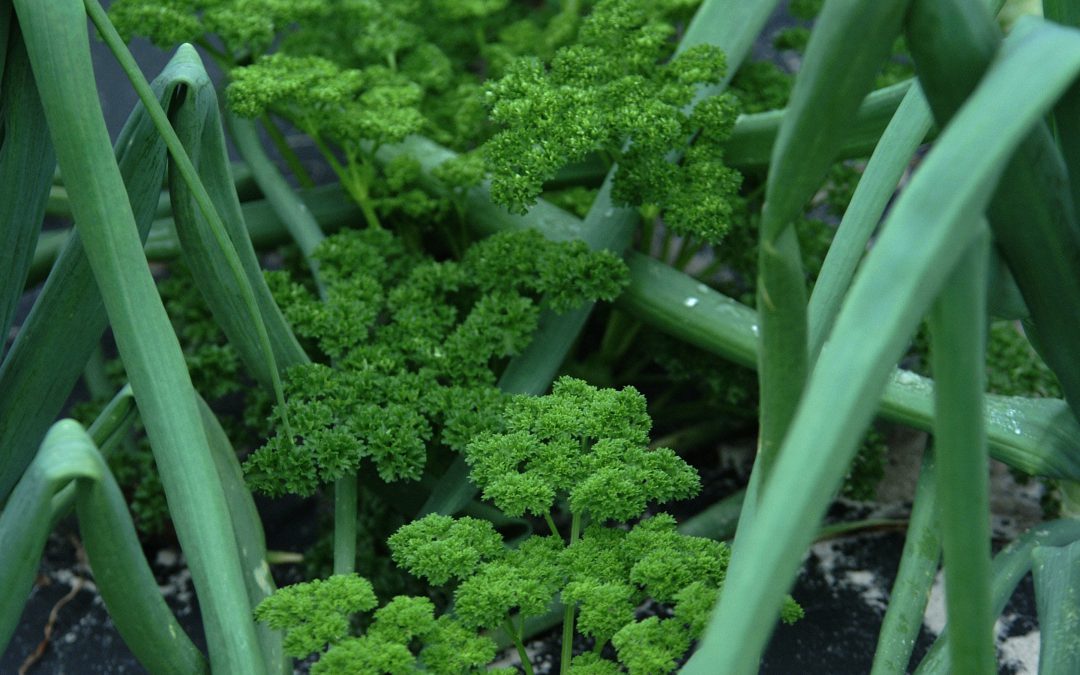
by Ashley Stonecipher | Dec 10, 2021
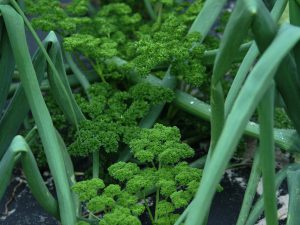
Multi-cropping at a Gainesville, FL organic garden.
As we go into the winter here in the Panhandle the following herbs will do well: cilantro, parsley, fennel, thyme, chives, oregano, sage and dill. Basil is a popular herb but will need to be inside by a kitchen window this time of year. It will drop leaves below 40 degrees F.
Cilantro: Needs full to partial sun, excellent soil drainage, and can be sued at 6 inches in height. The dry seeds are used to make the spice Coriander.
Parsley: Loves the cool weather and will bloom in the spring. Parsley likes afternoon shade. The seeds do take longer to germinate so do not give up on this plant. The root has a strong flavor and is used in holiday dishes. Parsley is beneficial to your health and contain vitamins A, C, K and is also high in calcium and iron.
Fennel: Needs full sun and moist soil. Fennel should not be planted near dill or cilantro because it will cross pollinate and reduce seed production. Fennel is good for digestive health and the shoots, leaves, and seeds are all useful in cooking. This plant also is host to the black swallowtail caterpillar.
Thyme: Needs full sun, well-drained soil and is extremely drought tolerant. Thyme does very well in a windowsill. This plant is highly attractive to bees and creates a delicious honey.
Chives: Prefers sunlight and well drained soil. This can be used for an onion or garlic flavor to your dish. It will need to be divided every couple of years since it grows so well here. Also, very good mixed into butter or cream cheese as a spread.
Oregano: This is the most widely used culinary and medicinal herb. It has tiny purple flowers that bloom all summer. It needs full sun and well-drained soil. Its best flavor is when you harvest the leaves as the flower buds form. The stems can be cut and dried and used in the cooking as well.
Sage: This herb needs full sun and very well drained soil. It is a small silvery leaf plant that is a very popular seasoning during Thanksgiving for turkey. It is also good on other poultry.
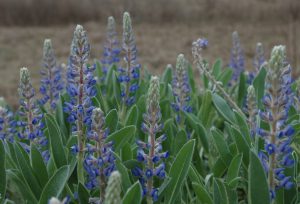
Sage. UF/IFAS Photo: Josh Wickham.
Dill: This herb likes full sun as well and serves as a host plant to the Black Swallowtail Butterfly. It is a very aromatic herb used both for its leaves and the seeds.
When harvesting herbs look for leaves that are young and tender with good color. Wash your herbs and pick them as you need them for best flavor, unless you plan to store them. When storing fresh herbs, it is important to know that they lose their flavor over time. They will store in the refrigerator from 1-3 weeks, freezer, and if dried can last up to 3 years.
Source: https://gardeningsolutions.ifas.ufl.edu/plants/edibles/ vegetables/herbs.html
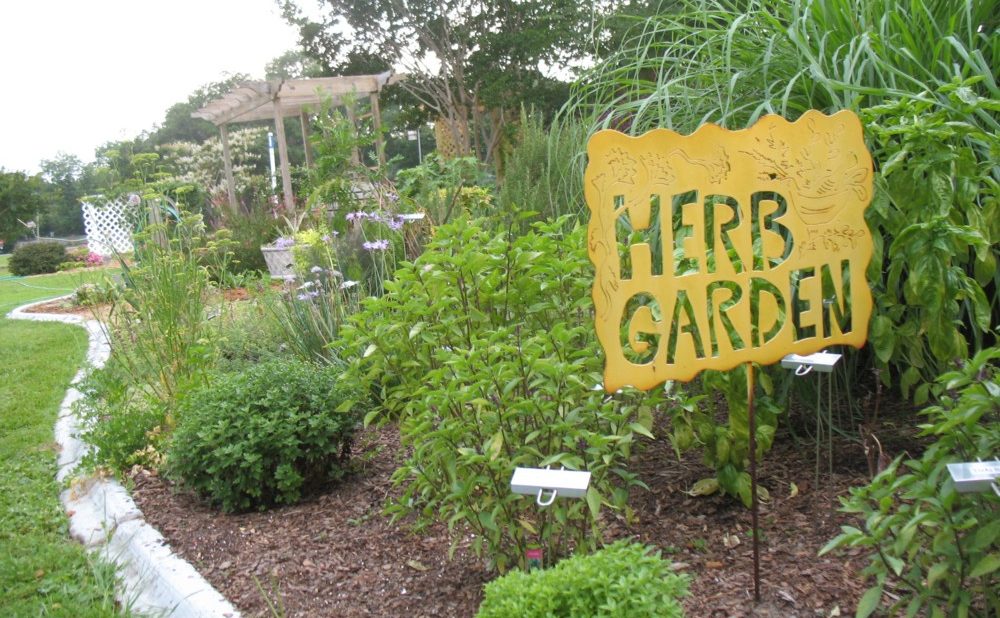
by Ashley Stonecipher | Dec 2, 2021
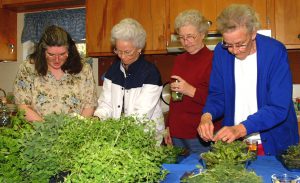
Women making vinegar at a class in Starke
Herbs are often underutilized in our cooking. There are many benefits of growing and using herbs. They add flavor to foods and beverages and reduce the need for salt, fat, and sugar. Herbs are also easy to grow at home and low maintenance!
Herbs can be used fresh, dried, and frozen. There are several tips of how to use herbs in your kitchen. You will need to adjust recipes depending on how the herb is prepared. For example, 1 tablespoon of finely cut fresh herbs equals 1 teaspoon of dried herbs and is equivalent to 1/4-1/2 teaspoon of ground dried herbs. It is always best to start with small amounts and add more to taste. Dried ground herbs can be used on meat, soups, sauces, and vegetables to name a few.
In hot dishes fresh herbs should be added near the end of the cooking time. If they are delicate herbs, you could do it in the last 1 to 2 minutes and less delicate herbs in the last 20 minutes of cooking. In cold dishes, herbs should be added several hours before serving or overnight. Each herb has its own flavor profile, so experiment and see which you like best! Some common herb and food combinations are basil and tomato products, rosemary and meats, sage and poultry, and mint and desserts. Have fun trying different combination of herbs and food and remember to start with little and add as needed for the desired taste!
Source: Minton, Emily and Maddox, Martha. 2018. “Cooking with Fresh Herbs.” UF/IFAS Extension. FCS8932/FY1209: Cooking with Fresh Herbs (ufl.edu)

by Ashley Stonecipher | Oct 28, 2021
As October gets by us and November quickly approaches, I would like to include the preparation on What to Plant? And What to Do? Some great annual plant choices are digitalis (foxglove), petunias, and Shasta daisy. There are many daffodil bulb varieties for North Florida including the following: Carlton, Fortune, Silver Charms, Thalia, and Sweetness. We will be getting into more of the cooler days, so this is a good time to start bulb onions and salad crops such as arugula, lettuce, and spinach. Dill, fennel, oregano, and sage are all herbs that can be planted throughout the fall months.
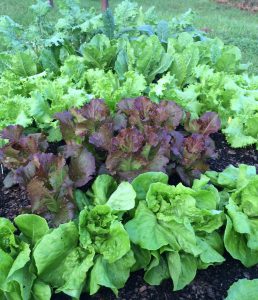
Start preparing now so your fall garden will be full of dark leafy greens, multi-colored lettuces, and root vegetables of all shapes and sizes. Photo by Molly Jameson.
In lawns there are a few key things that can be done in October. It is possible to control winter weeds before they appear. This is the time to use preemergent herbicides when nighttime temperatures are between 55-60 degrees Fahrenheit for four to five days in a row. If a green lawn is desired, you can overseed with annual ryegrass when the daytime temperatures are in the low 70s. Remember, the lawn will still need to be watered and mowed to maintain a healthy ryegrass. Watch for fungus like brown patch and large patch disease. This can become active when the soil temperature is between 65-75 degrees Fahrenheit.
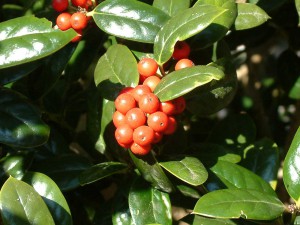
Hollies also attract bees to the landscape.
Credit: Beth Bolles, UF IFAS Extension Escambia County
And last but not least as you prepare for winter around the corner you can plant evergreen hollies that will make it through the cold and provide a splash of color with red berries. Gather pine needles that are dropping and use as a natural mulch, and this is the last month that strawberry plants can be established in a bed or a large container.

by Ashley Stonecipher | Sep 23, 2021
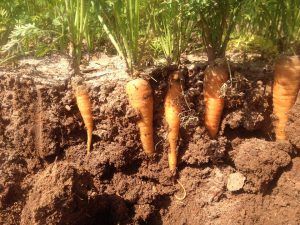
Photo by Full Earth Farm.
Yes, that’s right! We made it through the hottest part of the year and we are looking ahead to fall just around the corner! I am excited to be discussing September and what we can do to prepare for fall in the garden. As the nighttime temperatures start to cool down, we are given many more options.
For annual color plantings in September, try Ageratum, Celosia, Zinnias, and Wax Begonia to add fall color to your landscape. Bulbs will also add color, texture, and pattern to a bed. If you have some extra space, a variety of elephant ears could really accent a bed or you could always go with the classic calla, narcissus or zephyr lily. Popular vegetables to plant in North Florida in September are broccoli, carrot, cabbage, and collards. See Vegetable Gardening in Florida This is also the time of year to establish strawberry plants. Some great herbs to get started are Mexican tarragon, mint, rosemary, and basil.
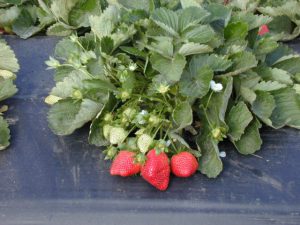
Image Credit: Matthew Orwat UF/IFAS Extension Washington County
There are many things that can be done in your lawn during September. Monitoring your lawn for its health and potential insect pests is important this time of year. Common insects to scout for are fall armyworms, chinch bugs, mole crickets, and sod webworms. The last fertilizer application should be done by the middle to end of September. Make sure you choose a fertilizer with little to no phosphorus unless a soil test shows differently. To maintain a healthy lawn, avoid weed and feed products and only apply herbicides in areas with high infestations of weeds. Weed and feed products are not recommended because the timing of when to fertilize and the timing of the weed killer is not always the same. The best management practice is to use a separate treatment for weeds and when possible spot treat weeds.
If you already have bulbs in your landscape from previous growing seasons, this is the time to divide and replant those that are big. You can also add organic matter to new planting areas. Continue working on your vegetable plants and prepare them for either transplants for a fast start, or plants seeds for more variety. Throughout your landscape, it is important that plants are getting the right amount of water as we go in and out of wet and dry weather this time of year.
October will be here before we know it in just a couple of weeks. Look out for the next article to come. We will be getting into the cooler nights and more options for planting vegetables and herbs!
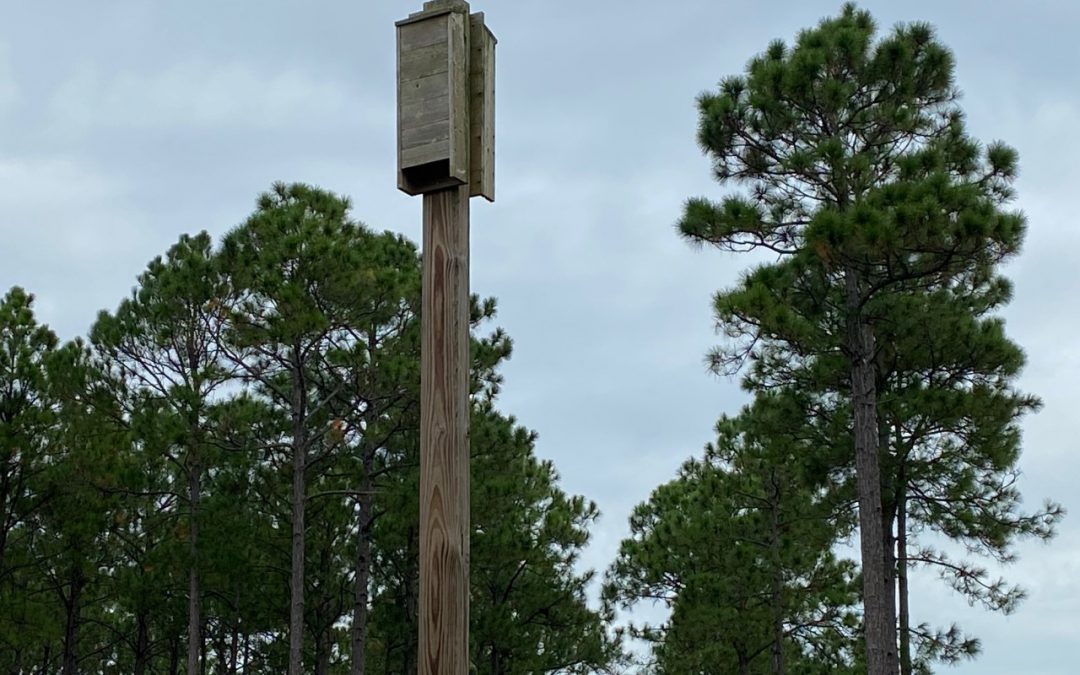
by Stephen Greer | Sep 16, 2021
Bats bring a beneficial component to your property and community. This flying mammal is an exceptional nocturnal feeder of many insect pests and they are important pollinators of many food plants. However, several challenges face this night flyer, like reduced roosting locations, reduced foraging sights, and over use of pesticides.
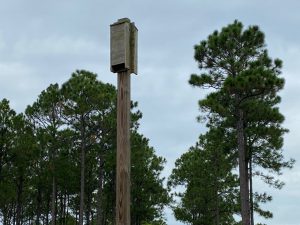
Photo courtesy: Stephen Greer
There are ways to attract bats to your backyard, farm, and community. Placement of bat boxes with ample water sources nearby is a good start. Water sources are another area of importance to attract bats. Have you sat by a swimming pool and witnessed a bat swoop down and skim across the water? It is likely they are either consuming a little water after feeding on a large number of harmful insects or are wetting their modified arms (wings) to help remove dust and dirt to reduce drag on their wings. Bats are the only mammal that are capable of true flight, the modified wings with skin spanning between specific bone structures allows them to accomplish this amazing action.
We often refer to bats as blind, but they can see shadows if out during daylight hours. This poor sight is not helpful enough for survival, this is where their echolocation abilities come into play. Humans studied bats to better understand how they make the sounds that bounce of an object and back to their sensing system that includes exceptional hearing. They locate and consume insects this way. If this sounds familiar, sonar systems were developed by studying this process.
Bats are the major harvester of night-flying insects, many that carry diseases that impact humans and other animals. Insect prey for bats include cockroaches, mosquitos, moths, beetles, gnats and others. A Big Brown Bat can catch and consume 3,000 to 7,000 mosquitos a night. Multiple this by a large bat population the amount of harmful insects harvested can go into the thousands of tons in a year. This is a positive impact for our forest and agriculture lands against major pests.
Florida is home to 13 different species of bats. They are always on the hunt for warm, dry, dark areas that are either natural or manmade narrow crevices. Out of all of these species, 4 bats are the primary inhabitants of bat houses. The Evening Bat and Brazilian free-tailed Bat are the most common in the panhandle of Florida. The Big Brown Bat and Southeastern Bat can at times occupy houses.
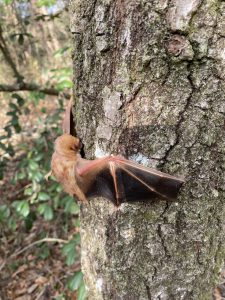
Photo courtesy: Matt Lollar
You can often locate bats boxes at your garden and agriculture centers or order online. Another option is to build your own boxes. Just remember the best way to erect a bat box is on a tall post. It is recommended to set the boxes around 10 feet off the ground. Placing boxes on trees creates a setting for potential predators to approach and feed on bats. Snakes have been known to enter and feed on young bats that are not fully developed and at best are poor fliers.
As a reminder, never touch a bat or any other wild animals. Bats that are healthy are not found on the ground, so assume the bat is not health and may be carrying a disease. On a final note, enjoy sitting on the back porch and watching the acrobatics of these amazing mammals in the evening sky.














